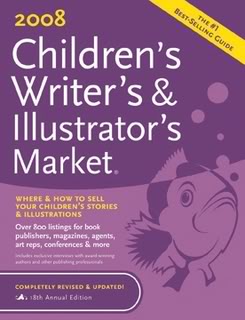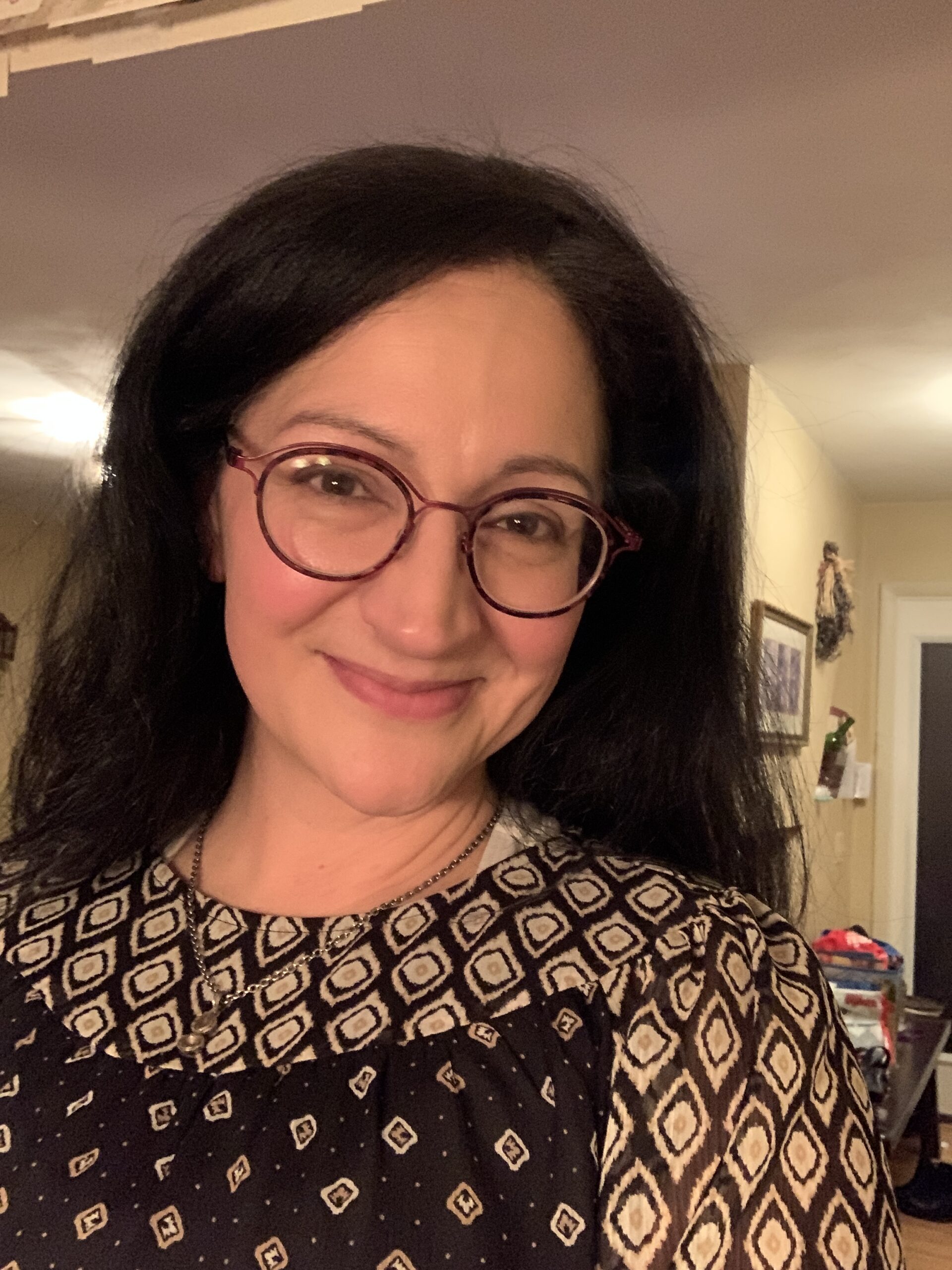INTERVIEW: Alice Pope
By Therese Walsh | July 27, 2007 |
 Anyone interested in breaking into the children’s or young adult market, take note: Today’s interviewee knows a lot about this business. Alice Pope is the editor of the Children’s Writer’s & Illustrator’s Market (CWIM), the foremost guide for these genres, published annually through Writer’s Digest Books. We’re thrilled she’s agreed to answer some of our questions about CWIM and the market itself. Enjoy!
Anyone interested in breaking into the children’s or young adult market, take note: Today’s interviewee knows a lot about this business. Alice Pope is the editor of the Children’s Writer’s & Illustrator’s Market (CWIM), the foremost guide for these genres, published annually through Writer’s Digest Books. We’re thrilled she’s agreed to answer some of our questions about CWIM and the market itself. Enjoy!
Interview with Alice Pope
Q: For people who might not know, what is the CWIM? What makes it a valuable resource for children’s writers?
AP: CWIM is also known as Children’s Writer’s & Illustrator’s Market. It’s an annual guide for (obviously) children’s writers and illustrators seeking publication. CWIM lists hundreds of book publishers, magazines, agents and reps, contests, conferences, etc. It’s a great tool for writers because we offer the most up-to-date and complete information we can in a print format. We get our information straight from editors, agents, contest directors, etc.
We also put together a wonderful (in my humble opinion) collection of articles and interviews every year, which is the fun part of working on CWIM. There’s a lot of useful information between our covers. We include craft-y pieces, business-y pieces, and lots of info and advice straight from writers themselves, both first-timers and well-seasoned. I think it’s both instructional and inspirational.
Q: How long have you been the editor of the CWIM?
AP: The first edition of CWIM I worked on was the 1994 edition (as a production editor). I co-edited the 1995 CWIM and then, after much pestering of the higher-ups, fully took the helm for the 1996 edition. So something like 13 or 14 years. I have a long attention span. (And I really love my book.)
Q: How has the CWIM changed over the years?
AP: I suppose the biggest difference is the number of articles and interviews we include. When the book started in 1989, it was fewer than 180 pages long and included just two articles. The 2008 edition is 448 pages long and includes two dozen features and six “Insider Report” interviews. And (I hope) over the years the book has taken on my voice a bit—there’s a lot of me in it.
Q: How is this year’s CWIM (released in August) different from last year’s
release?
AP: Something I’m trying to do more of as far as CWIM features is to not only assign articles to writers, but also to industry professionals, which is something I hadn’t done very much in the past. The 2008 CWIM features an article on writing for boys by Delacorte editor Krista Marino; an article on writing chick lit for teens co-authored by HarperCollins editor Farrin Jacobs and author Sarah Mlynowski; and an article for illustrators on creating effective promo pieces by Henry Holt associate art director Laurent Linn. And let me tell you, editors turn in really clean, well-written articles! I’m looking forward to working with more of them for future CWIM editions.
Q: Have you noticed any new trends with publishers? Are certain subgenres–like folk tales–“dying” away? Has there been a resurgence of any subgenre that had been “quiet” for a while?
AP: Ah, the trends question. I’m not a fan of the trends question—never quite sure where to go with it. That said, by my observations at the recent BookExpo America, there’s still a ton of YA great out there including plenty of chick lit for teen girls. Lots of fantasy and adventure stuff, and more and more heavily illustrated mid-grade novels, almost novel/graphic novel hybrids. And it seems the picture books market is still a little soft, although there are certainly plenty of picture books being published. Oh, and pirates—publishers/readers still seem to dig pirates. (My co-worker is convinced Vikings will be the new pirates, so polish up that Leif Ericson adventure sitting in your drawer.)
Q: What should people do to get the most out of the CWIM when looking for a home for their story?
AP: Read the articles; follow the advice. We include subject and age-level indexes that may be helpful for writers narrowing down a list of potential markets. Read the listing that interest you; follow the submission guidelines given. It’s fairly simple.
Q: What do you recommend writers do between new publications of CWIM, to keep up with changes in the business?
AP: Writers should keep in mind that CWIM is just one of many weapons in your arsenal. Consult the SCBWI Market Survey (if you’re a member). Read blogs and newsletters. Obtain publishers guidelines and peruse their websites. Visit agents’ websites too. Attend conferences to meet editors, agents, and other writers, to get feedback on your work, and to learn. Join a listserv and/or a writers group and interact with other writers on a regular basis. Go to bookstores to see what’s new.
Q: What do you say to someone who has last year’s edition of the CWIM, who wonders if it’s worth updating every year and why?
AP: Good question…
Honestly, I’m sure one could get buy with buying the book every other year. As far as the listings, some things do change each year, but it’s easy enough to find new information online. So one can get by without it, but why would one want to? If you miss the 2008 edition, for example, you’d miss out on articles by Kathleen Duey, Candie Moonshower, Justina Chen Headley and Jarrett Krosoczka among many others. You’d miss interviews with Jack Prelutsky, Mo Willems, K.L. Going and Matt Phelan as well as editors of HIGHLIGHTS, JACK AND JILL and CRICKET magazines and the ever-popular First Books feature (written by yours truly). I think buying CWIM each year is one (pretty darn cheap on Amazon) way writers can feel connected to the world of children’s publishing. (Have I mentioned I love my book?)
Q: What are some of the most common errors you see writers make when trying to get their stories published?
AP: I can think of a few things…
First, many writers have a hard time pitching their own work, whether in a cover letter or query or in person at a conference. Granted it’s tough to sum up one’s story in a pithy few lines, but if you can’t do it, how can an agent pitch it to an editor, an editor pitch it to a pub board, a sales rep pitch it to a book buyer, a bookseller pitch it to a potential reader…you get the idea. Learn how to pitch and how to write a compelling query.
Second, many writers don’t do their homework. Part of the reason many publishers don’t accept unsolicited manuscripts is that so many of what they’ve received in the past are (often wildly) inappropriate. As I mentioned above, read publishers’ CWIM listings, check their guidelines, visit their websites, read some of their titles or at least look at them in a bookstore or on Amazon. And don’t send them material that they don’t publish.
Third, many writers simply submit material before it’s ready. Look at what’s out there—there are some amazing books for young readers being published. If you can’t step back and assess your work objectively, find someone who can—a critique partner or group, or a writer or editor at a conference. You’re not doing yourself any favors by sending out work that’s not as good as it could possibly be.
And finally—something I’ve noticed as I’ve critiques manuscript as conferences over the years—there are writers out there who aren’t reading in their genre. I know this because if they were, they wouldn’t, for example, be writing 5000-word picture books overflowing with description. As Stephen King says in On Writing: “If you don’t have time to read, you don’t have the time (or the tools) to write. Simple as that.” Lost isn’t on for quite a while, The Sopranos are done, and everything’s in reruns—it’s a good time of the year to turn of the TV and open a book. (I’m just getting into Naomi and Ey’s No Kiss List by Rachel Cohn & David Levithan. I picked it up at BEA.)
Q: Is there anything I should’ve asked and didn’t, or is there anything you’d like to add?
AP: Be sure to visit my blog (which at times I post to often and at times not so often). I’ll be blogging from the SCBWI conference in L.A. August 3-6. Also visit cwim.com to sign up for a children’s publishing-related newsletter that will launch later in the summer. And feel free to email me (alice.pope@fwpubs.com).
Thanks for talking to me.
Thanks for a great interview, Alice!










Alice is awesome.
lots of great info. thanks